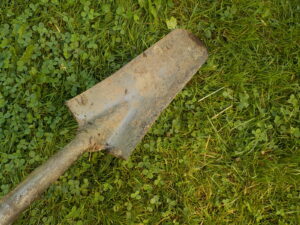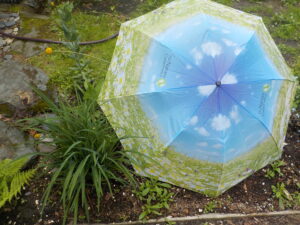Planting, Transplanting and Moving Plants
Posted on Wednesday, June 14, 2023 · Leave a Comment
Once, a long time ago, I was sitting on a porch overlooking a landscape with an acquaintance. I commented that if she removed or thinned a line of tall pine trees, she would have a lovely long view. “Great idea! I’ll have them moved,” she said. Even though she was a woman of means, I explained that it wouldn’t be possible to move 60-foot white pines. She should either live with them or cut some down.
On the other hand, I move shrubs and perennial flowers regularly. Done right, a plant barely knows it’s been moved. I have a number of reasons for moving a plant.
First, if the plant is not growing well. Perhaps the tag on it said, “Sun or Part shade.” Well, what is part shade? I define full sun as 5 or 6 hours of afternoon sun. Morning sun is less hot, and a sun-lover might want some afternoon sun in addition to the morning sun.
Why else move a plant? We all change our minds. Or plants grow and start to crowd out their neighbors. We get new plants and decide to plant one where something else is already growing. Moving plants is a normal part of gardening.

Calycanthus or sweetshrub is a shade-loving shrub that I moved twice to find it a happy home
I have a lovely shrub called Carolina sweetshrub or Calycanthyus floridus. My reference book by Michael Dirr, “Manual of Woody Landscape Plants” suggests planting it in sun or shade in deep moist loam. I planted it in full sun in deep, moist loam and the leaves burned that first summer. I assumed it had been grown in a shady place at the nursery, so figured it would be fine in Year 2. It was not. Its leaves burned again. So that fall I moved it to a shady spot.
For the next three years or more my sweetshrub did not burn up in summer, but neither did it flower much. I wanted those deep burgundy wine-colored blossoms, each more than an inch across. So I finally moved it again – this time under a pear tree that allowed filtered sunshine. Perfect! It has bloomed magnificently ever since.
My technique for moving a shrub is simple. I decide where it should go, and get the area ready by removing grass or plants and loosening the top layers of soil. Then I go to the plant if question with a drain spade that has a blade 16 inches long and only 5 inches wide. I slide it under the shrub on all four sides by thrusting the blade into the soil at a 45 degree angle. On each side I give the spade a gently downward push to lift and loosen the shrub a little. By the fourth thrust, it should be ready to lift out by sliding my two hands under the root ball.

This drain spade is good for transplanting perennials and shrubs
I move the shrub into a waiting wheelbarrow and bring it to its new home. I measure the depth of the rootball and dig out a hole deep enough so that it will sit at the same depth it was originally. I dig a wide hole so that the area around the shrub will be nicely loosened and ready for roots to grow in it once I back fill the hole. I water well that day, and regularly all summer.
When I water a plant I have moved, I add something to the water: a capful (half a teaspoon) of something called “Superthrive” in a watering can of water. It was developed some 70 years ago and uses seaweed extracts and plant hormones to lessen transplant shock. I find it really helps. A small blurt of Neptune’s Harvest Fish and Seaweed fertilizer in the water adds some quick nutrition. I use both liquids on all my vegetables as I plant them, too.
Any plant that you planted this year can be moved now without damaging it. It takes several weeks before roots move far from their rootball. I don’t bother with a spade when moving new things. I use my CobraHead weeder which is shaped like a long curved finger. It gets under the rootball easily, and by wiggling it around I can loosen the plant and gently lift it out, pulling from below with my CobraHead.

An umbrella cah shade a stressed plant until the sun goes down
When I am moving an established perennial, I am more careful. Over the years – both from experience and readings – I have learned much about the root systems of common perennials. You probably have, too. Some have roots near the surface while others are more like tubers that go deep.
Peony roots go deep, and are not easy to move without breaking their fleshy tubers. Peony experts say to move them in the fall, when they are going dormant. But I once moved a hedge of peonies in June with about 50 plants, and not one showed ill-effects.
It is best to move established perennials in the early evening, or on a cool or drizzly day. Some plants go into shock if disturbed in the heat of the day, so avoid doing so if you can. Others, like daylilies, don’t care at all about being moved on a hot dry day.
I recently was planting my front walkway garden and noticed a Rudbeckia called ‘Prairie Sun’ that was too close to another plant, so I moved it at 11am on a hot day. After lunch the leaves were limp and it was in distress. My solution? I gave it another drink of Superthrive and placed an umbrella over it to provide shade. By the next morning it looked like it had never been moved!
So go ahead, move plants. Other than big trees, there are very few you can’t move.
Henry is the author of 4 gardening books. He is a gardening consultant and speaker for garden clubs and library groups. Reach him at
henry.homeyer@comcast.net.





